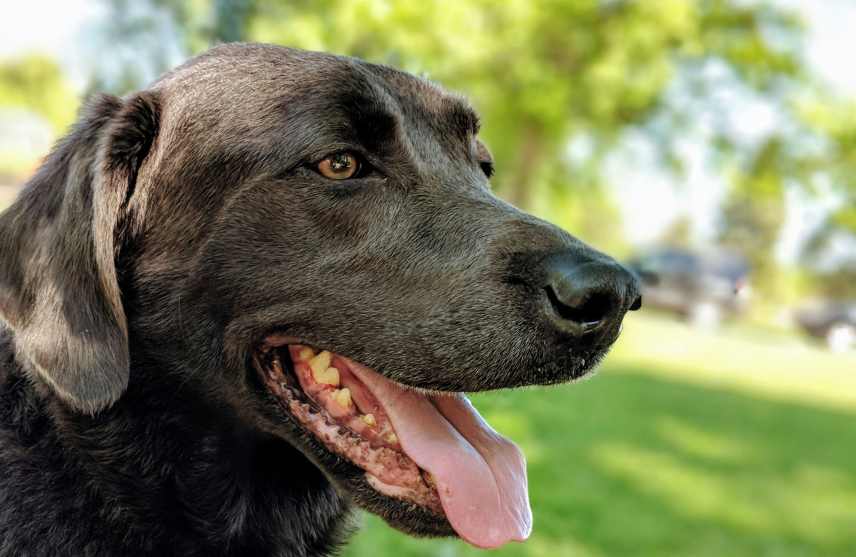Dog owners often notice their furry friends panting and appearing restless, leaving them wondering if something might be wrong. While occasional panting is normal, persistent or excessive panting coupled with restlessness could indicate an underlying issue.
So I thought that today we’d look into the various reasons why your dog might be panting and restless, decipher potential health concerns, and offer actionable solutions to ensure your pet’s well-being.

Why Do Dogs Pant?
Panting is a natural physiological response in dogs, primarily serving as a means to regulate body temperature. Unlike humans, dogs don’t sweat through their skin but instead rely on panting to cool down. Additionally, dogs pant when they’re excited, anxious, or experiencing stress. Understanding the different triggers for panting is crucial in discerning whether your dog’s behavior is normal or indicative of an underlying issue.
Potential Health Concerns:
While panting is often harmless, persistent, or abnormal, panting could signal an array of health problems. Here are some potential issues to consider:
- Heatstroke: Dogs are susceptible to heatstroke, especially in hot climates or when exposed to excessive heat for prolonged periods. Alongside panting, symptoms may include lethargy, drooling, and elevated body temperature. Heatstroke is a medical emergency requiring immediate veterinary attention.
- Pain or Discomfort: Dogs may pant excessively if they’re in pain or discomfort due to injuries, arthritis, dental problems, or internal issues. Observing your dog’s body language and checking for signs of injury can help pinpoint potential sources of discomfort.
- Anxiety or Stress: Dogs may pant and exhibit restlessness when they’re anxious or stressed. This could be triggered by various factors such as loud noises, separation anxiety, or unfamiliar environments. Understanding your dog’s triggers and providing a calming environment can help alleviate stress-related panting.
- Respiratory Issues: Respiratory problems, including asthma, bronchitis, or respiratory infections, can cause panting in dogs. If your dog’s panting is accompanied by wheezing, coughing, or labored breathing, it’s essential to seek veterinary advice promptly.
- Heart Problems: Panting can be a symptom of heart issues such as congestive heart failure or heartworm disease. Other signs may include lethargy, coughing, and reduced appetite. Prompt diagnosis and treatment are crucial for managing cardiac conditions in dogs.
What Can I Do?
If you notice your dog panting and restless, here are some steps you can take to address the issue:
- Monitor Your Dog’s Environment: Ensure your dog has access to shade and water, especially during hot weather, to prevent heat-related issues. Avoid leaving your dog in hot cars or exposed to extreme temperatures.
- Observe for Signs of Discomfort: Check for signs of injuries, discomfort, or distress in your dog. If you suspect pain or injury, consult your veterinarian for a thorough examination and appropriate treatment.
- Manage Stress and Anxiety: Create a safe and comfortable environment for your dog, especially during stressful situations such as fireworks or thunderstorms. Provide comforting toys, engage in calming activities, or consider consulting a professional dog trainer or behaviorist for anxiety management techniques.
- Regular Veterinary Check-ups: Schedule regular veterinary visits to monitor your dog’s overall health and promptly address any underlying medical issues. Routine check-ups can help detect and manage health concerns before they escalate.
- Follow Veterinary Recommendations: If your dog is diagnosed with a specific medical condition, follow your veterinarian’s treatment plan diligently. This may include medication, dietary adjustments, or lifestyle modifications to improve your dog’s quality of life.
Conclusion:
Understanding why your dog is panting and restless is essential for ensuring their well-being and addressing any underlying health concerns. While occasional panting is normal, persistent or abnormal panting warrants attention and may indicate a need for veterinary evaluation.
By observing your dog’s behavior, addressing potential triggers, and seeking prompt veterinary care when needed, you can help your furry companion lead a healthy and happy life.
Remember, your veterinarian is your best ally in safeguarding your dog’s health and providing personalized guidance for their care.
Related Topics:
5 Effective Strategies to Train Your Dog to Stop Pacing: From Exercise to Anxiety Relief
Do You Know What to Do If Your Dog Gets Sick And There is No Vet?
